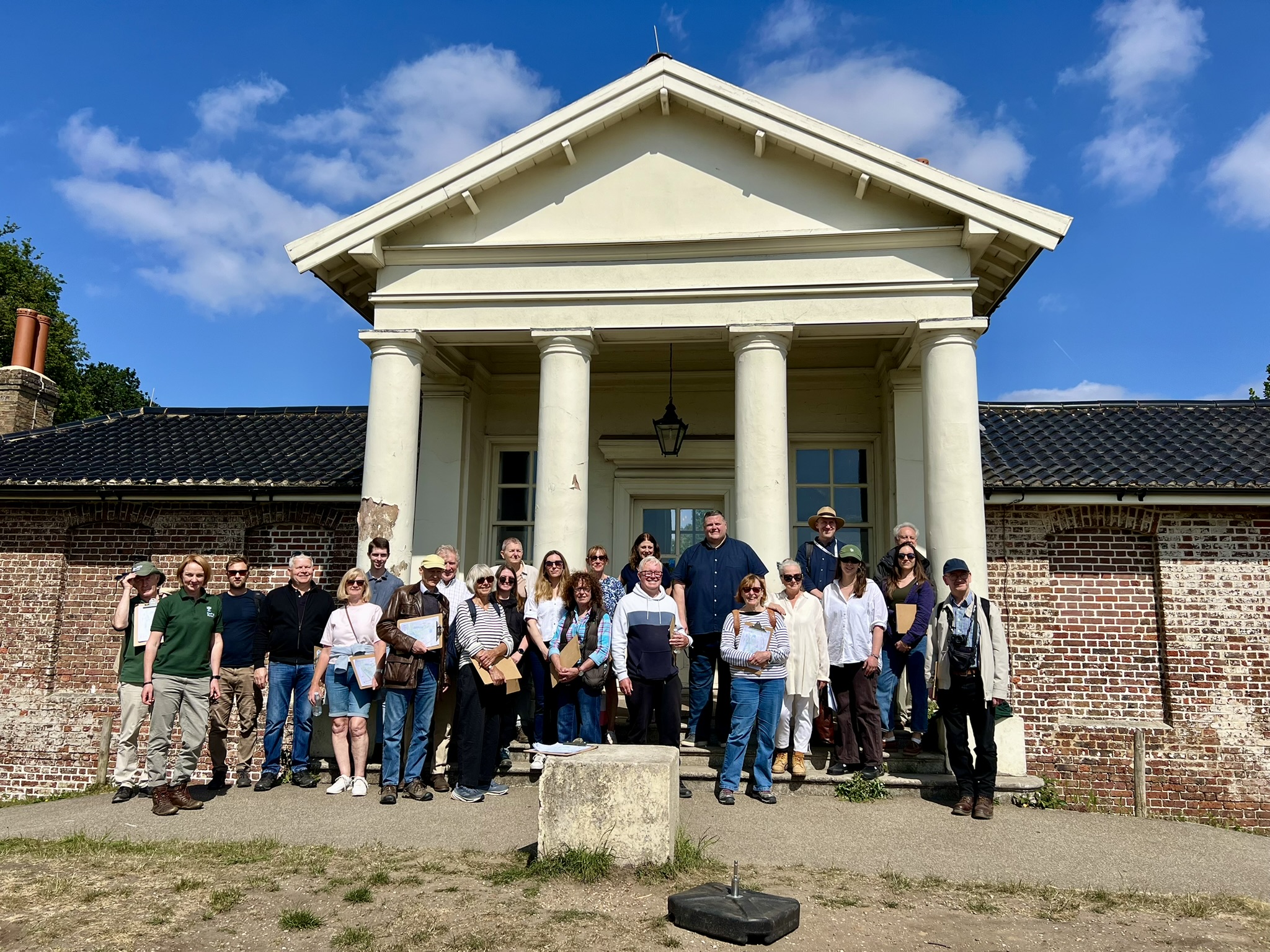In September last year, I provided an update on the Wanstead Park projects in-flight, following a site visit from the Epping Forest and Commons Committee at the City of London Corporation.
This week, we were pleased to extend these sessions to local community stakeholders operating in and around Wanstead Park, so they could hear from expert Officers and Committee Members where we are in delivering this complex mix or interconnected projects.
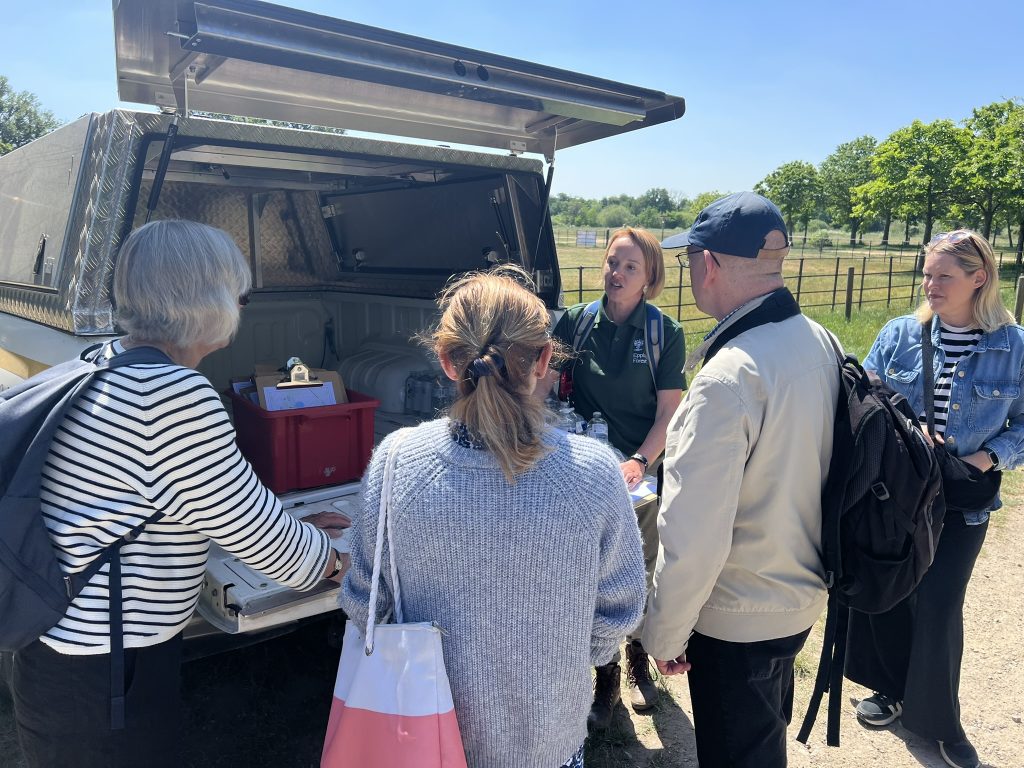
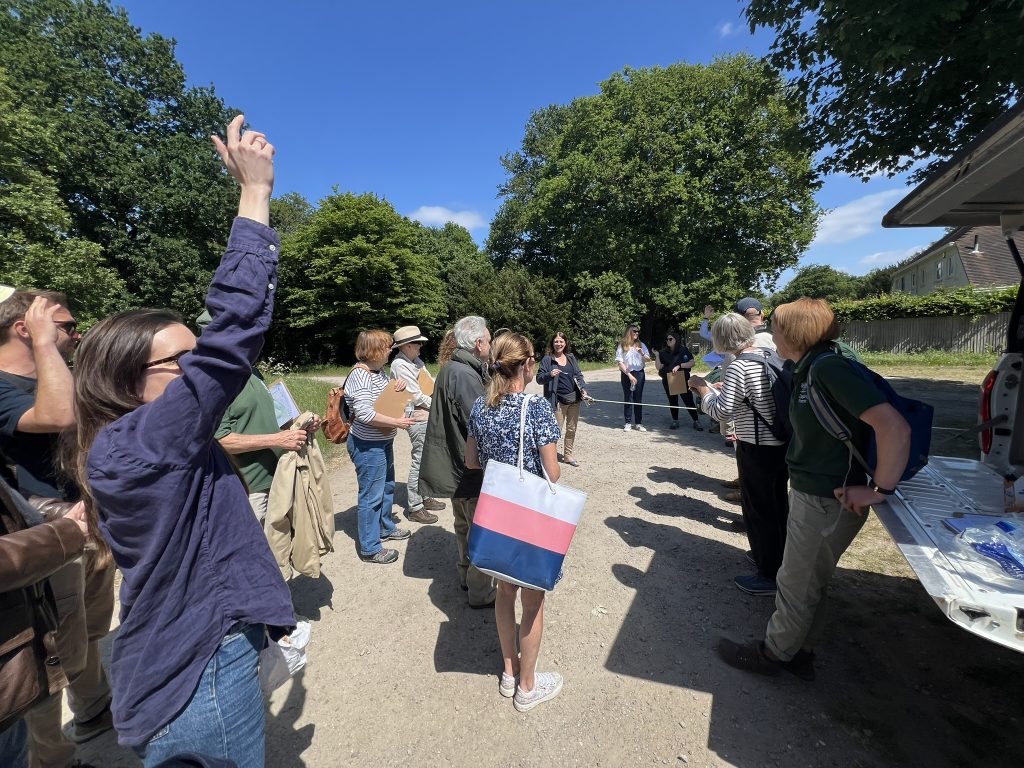
As many local stakeholders are aware, following our formal September visit, the Superintendent and I agreed that this needed a single point of contact who could co-ordinate across the projects with internal and external stakeholders, escalating risks and blockers. Following a recruitment process, Alison O’Connor joined the team as the Wanstead Park Projects Officer in April, working 2 days each week.
Over the next year, Alison will be working with the wider team to update the Wanstead Parkland Plan, which should take a longer term view of what the future of the Park should be and how we will deliver that in terms of resource allocation and attracting external grants and funding.
Below is a map of some of the key projects we focused in on during the visit.
We started our visit at the natural play area, behind the Temple, which was being used by a class of local school children.
With support from the Aldersbrook Families Association and the Friends of Wanstead Parklands, the Play Area will be refurbished in early June/July 2025. This will include replacing broken and redundant play equipment, rebuild and firming up of the climbing mound, installation of a hard surfaced path and a new accessible nest swing, to support those with different abilities.
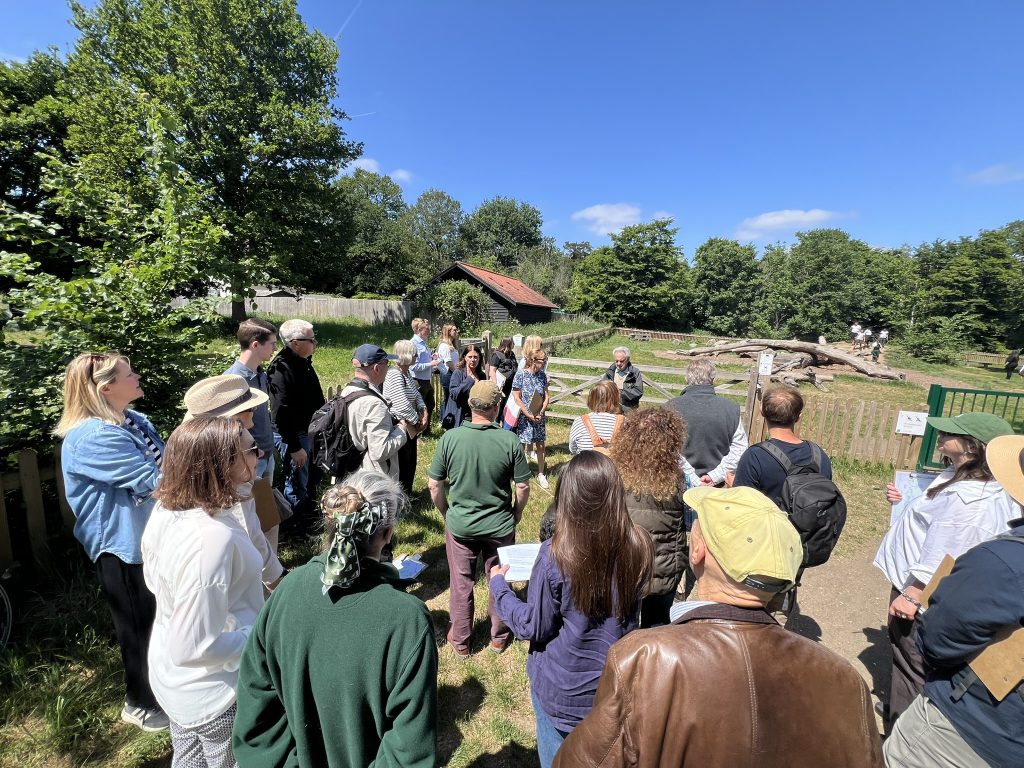
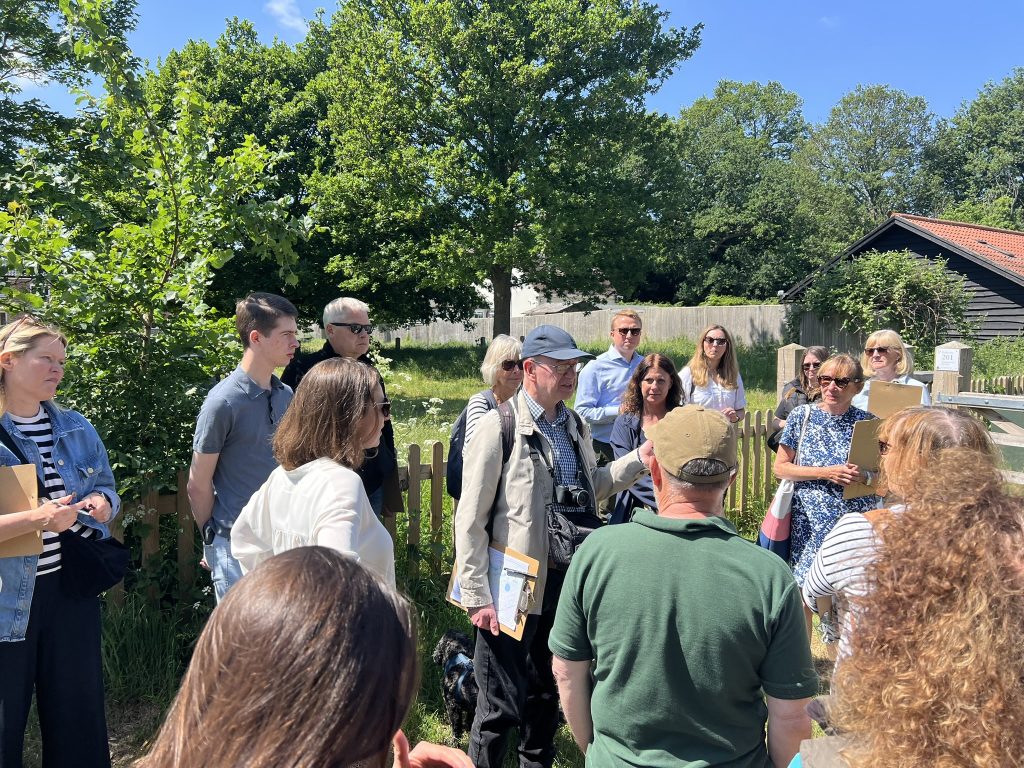
Next up was the Grotto. This Grade II listed building needs work to consolidate and stabilise its structure to remove it from the Heritage At Risk Register (HARR). This work will begin this summer and will continue until at least the end of the year.
The proposed works are the result of a consultation process with the relevant stakeholders and available budget, With a focus on conservation and repair, the works will include consolidation of loose fabric, surface cleaning, repointing, removal of invasive vegetation, new soft capping, relaying of existing flagstones and localised filling of cavities with existing stonework . From a distance these changes might not look like a lot, but along with a steel frame that will be erected at the back of the Grotto to support its main elevation, they will stabilise the ruin and ensure it remains in good and safe condition in the future, removing it from the HARR. City Surveyors Dept are working through the final elements of the tender process and the company that is awarded the contract will be announced shortly.
The desire to remove the green fencing around the Grotto and the need to add interpretation boards to celebrate the history of the site were raised and logged. It was also made clear to stakeholders that the funded work will be about stabilising the structure only – it will not be an attempt to restore the whole structure to what we think it may have looked like 150 years ago.
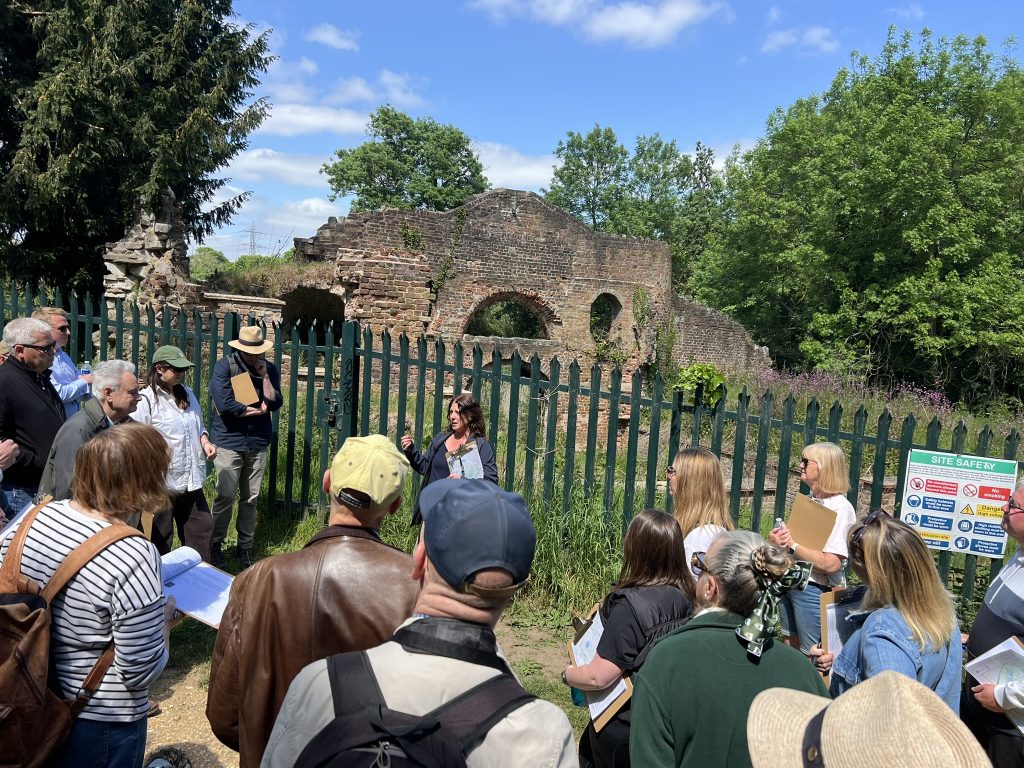
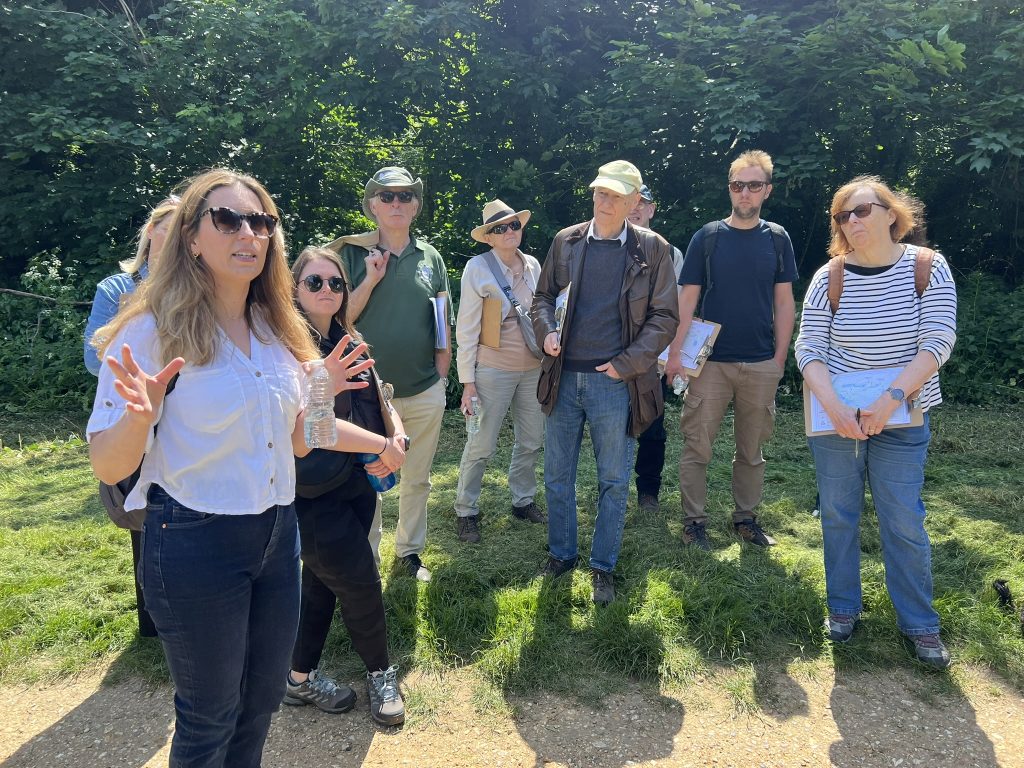
Next was the lower water course in front of the Grotto, connecting to the Ornamental Waters. There was a proposal to create a lower area of the lake in front of the Grotto so it could hold water during low water levels / seasons, allowing it to reflect the Grotto, showing it in its intended water setting.
Epping Forest had proposed this project, as part of a funding bid to the Mayor of London’s Green and Resilient Spaces Fund, but sadly it was rejected. Without this source of funding, and because of the archaeological significance of the stones in the lakebed, this has made it unfeasible to carry this on at this stage.
Stakeholders and Members present were vocal that they would like to see this project explore further, but appreciated that without any identified source of funding, it has to be deprioritised currently.
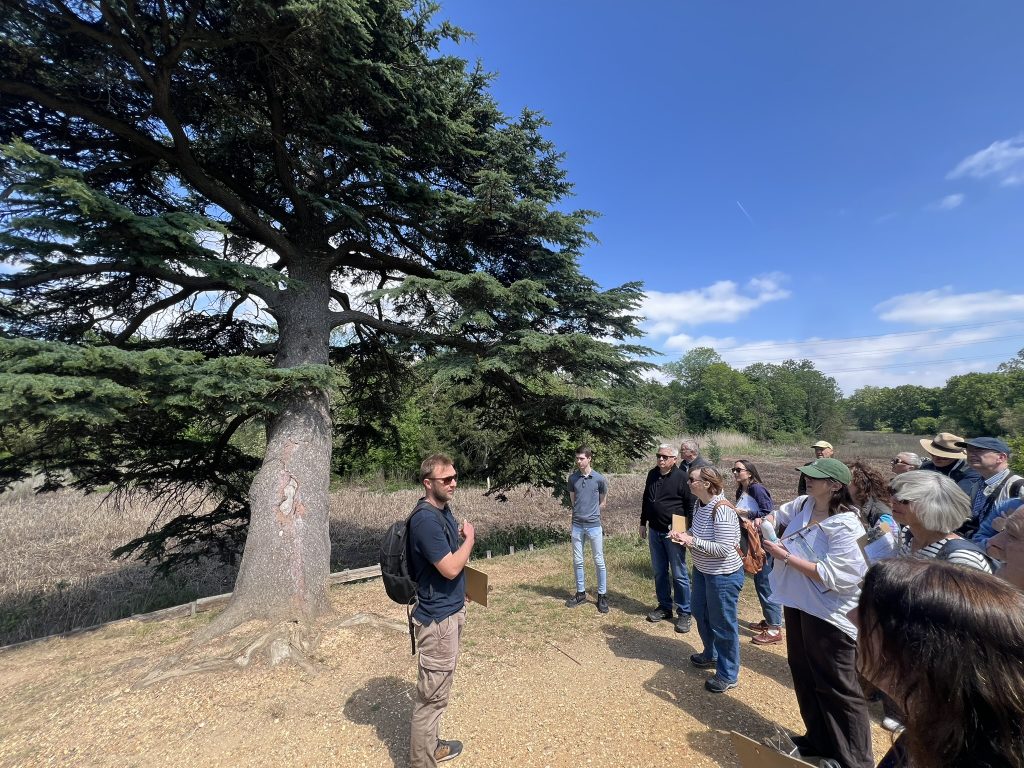
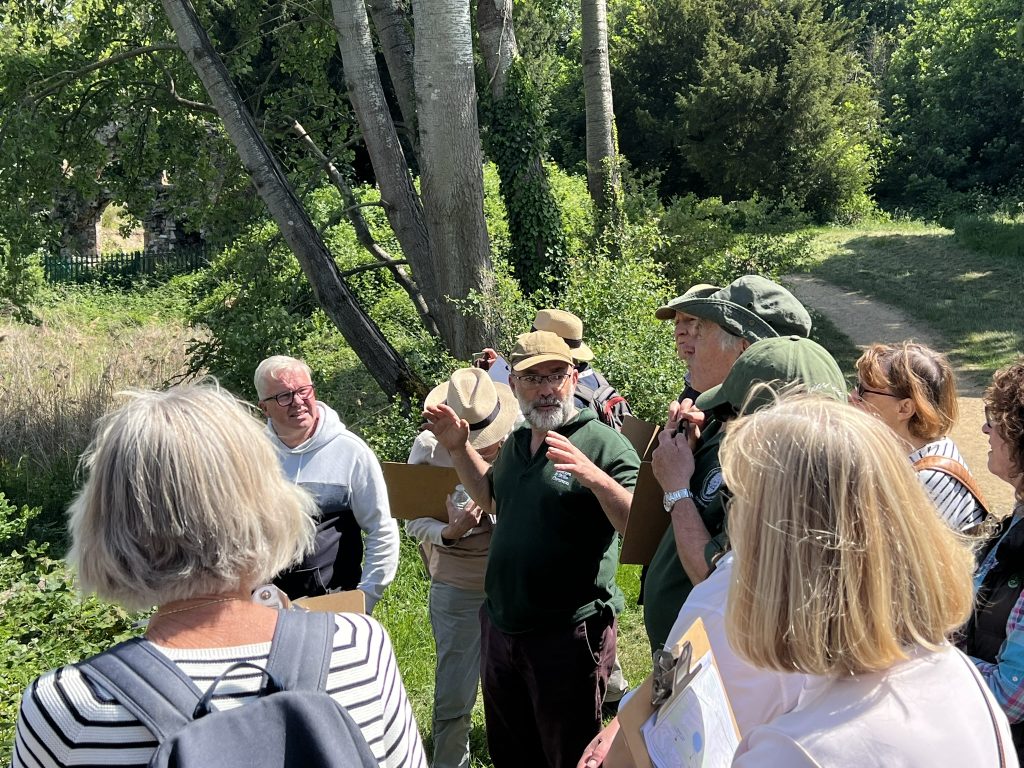
Next was the ‘Map Tree‘, one of the famous Cedars of Lebanon. This iconic tree next to the Ornamental Waters is unfortunately suffering from root damage caused by visitor impact.
Many different options have been explored by our expert arborist team, but it has been decided that over the next few weeks, a low fence will be put up around the cedar to protect the exposed roots at the base of the trunk. We are are exploring the planting of a new replacement tree near to the existing tree so that when its natural life does come to and end, there is hope for the future.
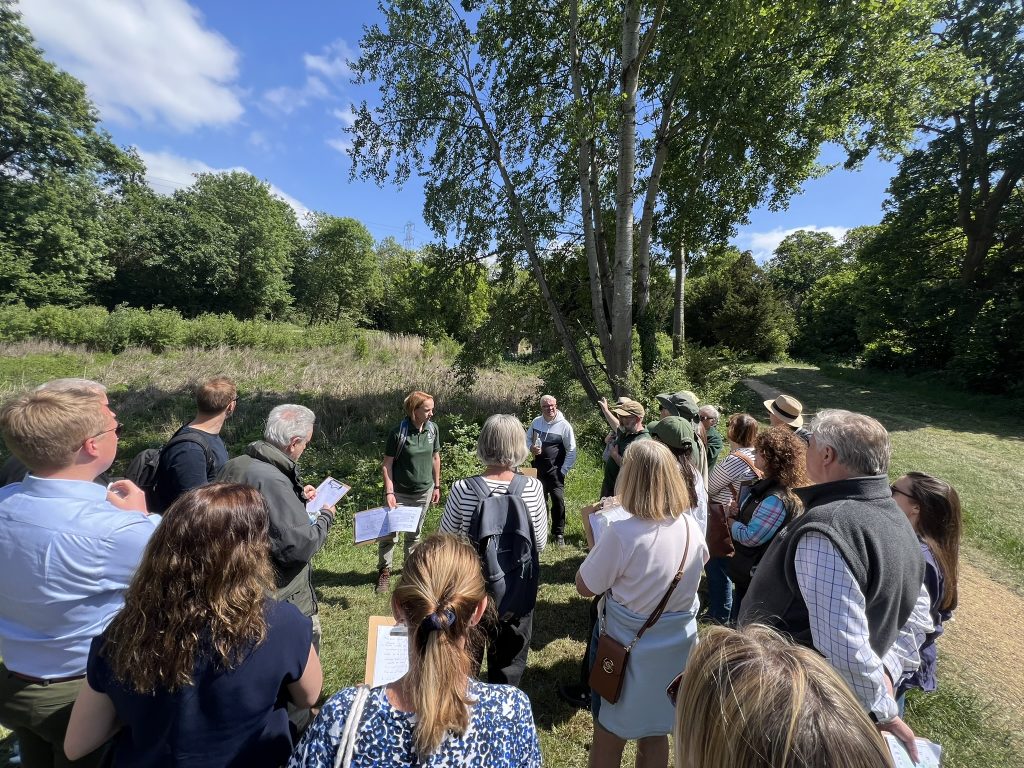
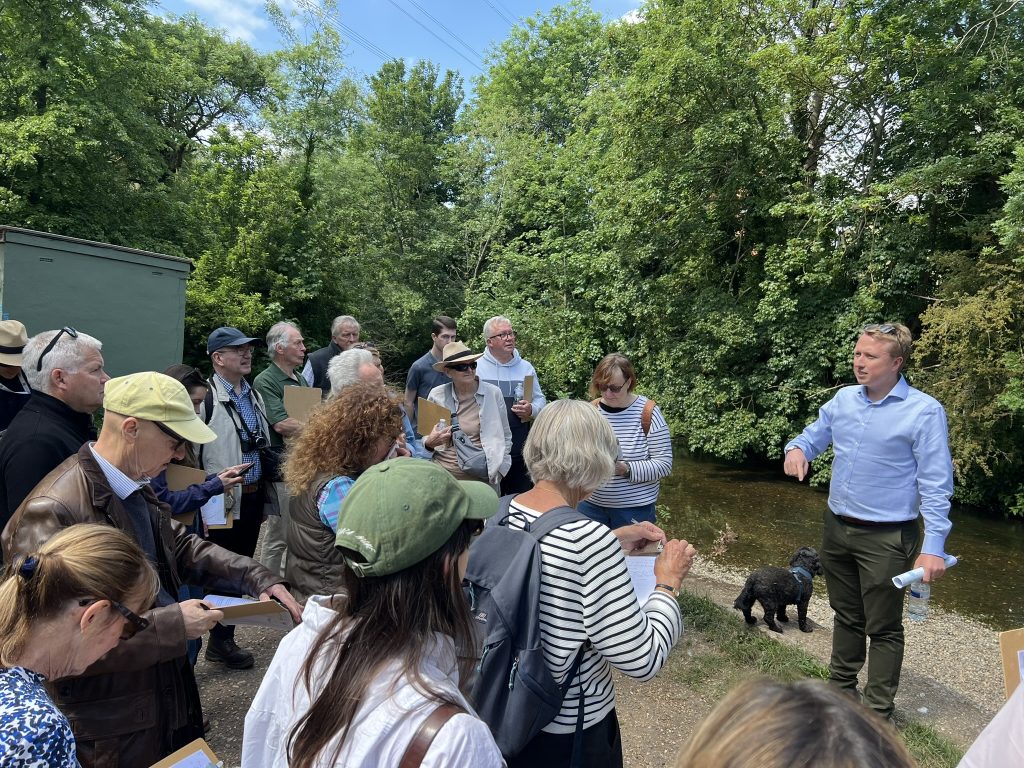
Next up were discussions on water resilience from the City Corporation’s District Surveyors department. Winter pumping of water into the Ornamental Waters from the River Roding has been an extraordinarily complex and expensive project. It is, however, hoped that this would provide much needed water into the lake, where it would be stored, and then naturally released back into the River during summer, helping to alleviate low flows in the River.
The abstraction of water from the River Roding is subject to Environment Agency licensing agreement and is currently awaiting a decision. However, all of the contractors used have been specialists recommended by the Environment Agency and we have hosted site visits with them to try and speed things up. If the license is approved, the new pump can be installed, but this will only be able to be used during the licensed months. The Environment Agency stipulate this could take up to 18 months to be reveiwed.
It is also important to note that the Environment Agency warns that by 2050, London could run out of water. As such, pumping water from the River Roding is not considered a sustainable solution to the issue of water resilience over the long-term.

Next was the Long Walk which, now that it has been cleared and opened up again, connects the Glade with Ornamental Water.
One project we have been exploring was the potential to improve land drainage down the Long Walk, maximising the water that could potentially flow into the Ornamental Waters. This would have included potentially digging ditches and installing underground pipes.
However, following advice from Heritage England (who were present on this visit), they highlighted that this area is one of the most archeologically sensitive parts of the Park – it is the oldest part of the gardens. The proposed works would have caused damage over a sizeable area and therefore the proposal has been shelved.
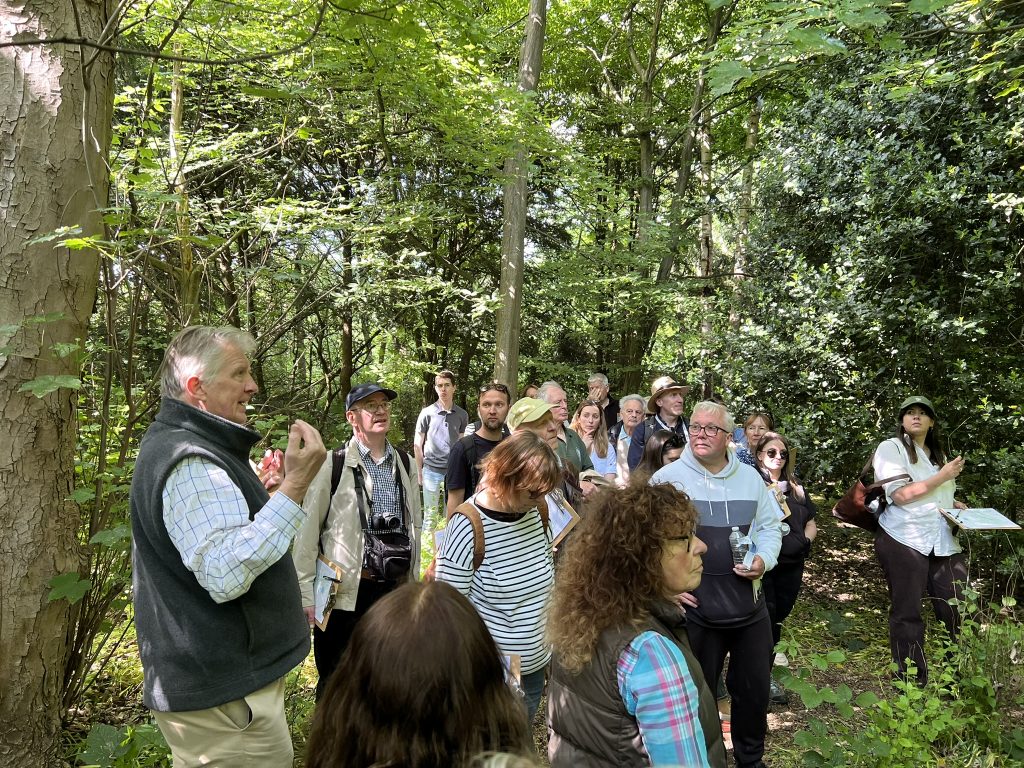

Verderer Nicholas Munday took us off-track into a wooded area of the park to show us one of the few viewing platforms which has been lost over time. The platforms would allow visitors to enjoy of the unique vistas across the Park from a vantage point, which is now and overgrown natural area.
It is hoped that as part of the next Parkland Plan, these areas could be re-established so that the views can be enjoyed across the heritage site once again.

Next was The Temple, which is a Grade II Listed Building in need of minor external works including repointing the brickwork and roof. This work is funded and will begin in the late spring for six weeks. The windows, timberwork and the portico will also be repaired and redecorated. Throughout the works the entire building will be surrounded in scaffolding. However, all of entrances will be accessible so the toilets and Temple opening weekends will not be affected.
Finally, we get back to the issue of how else we are trying to retain water and improve climate resilience in Wanstead Park.
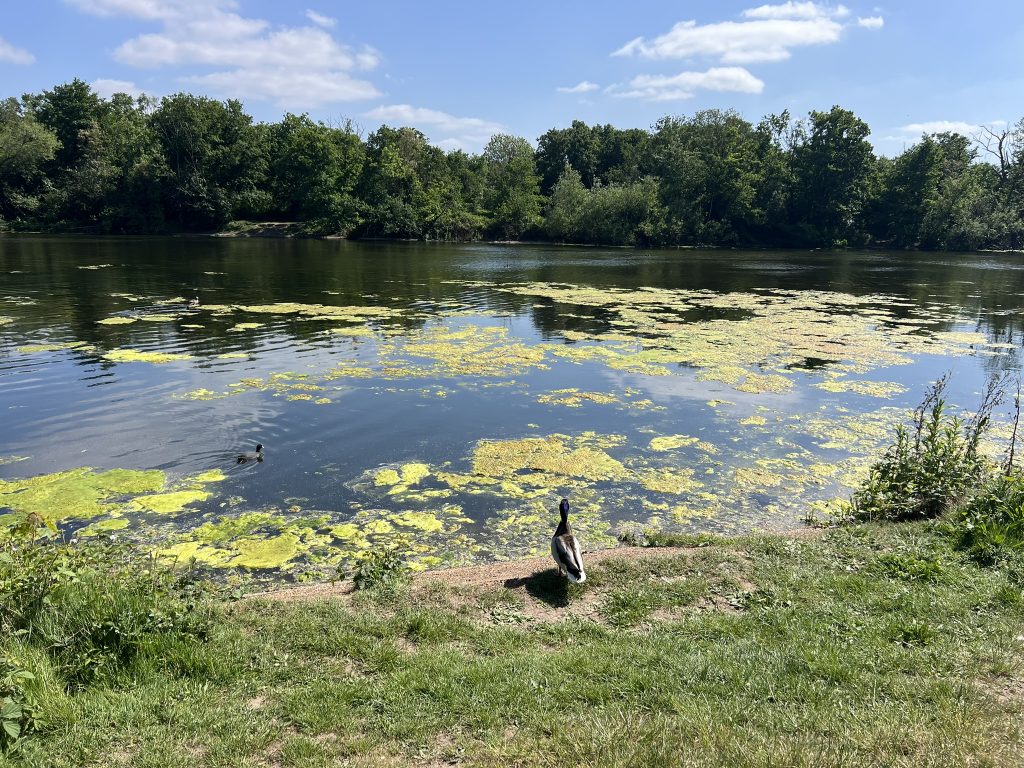
In addition to the winter pumping from the River Roding into Ornamental Waters, there was also a historic system of pumps lifting water up the cascade from lake to lake. The reinstatement of the pumphouse that previously lifted water from Ornamental Water to Perch Pond would include lowering the intake to enable water to be pumped at a greater range of levels. Additionally, the outfall would also be extended to supply to Heronry as well as Perch, enabling the three largest lakes to be supplied.
The City Corporation have commissioned consultants to work on detailed specifications and are tendering the new pumps/pump house. However, a confirmed source of water is required before this project can progress, so we are back to waiting for a decision from the Environment Agency regarding abstraction from the River Roding.
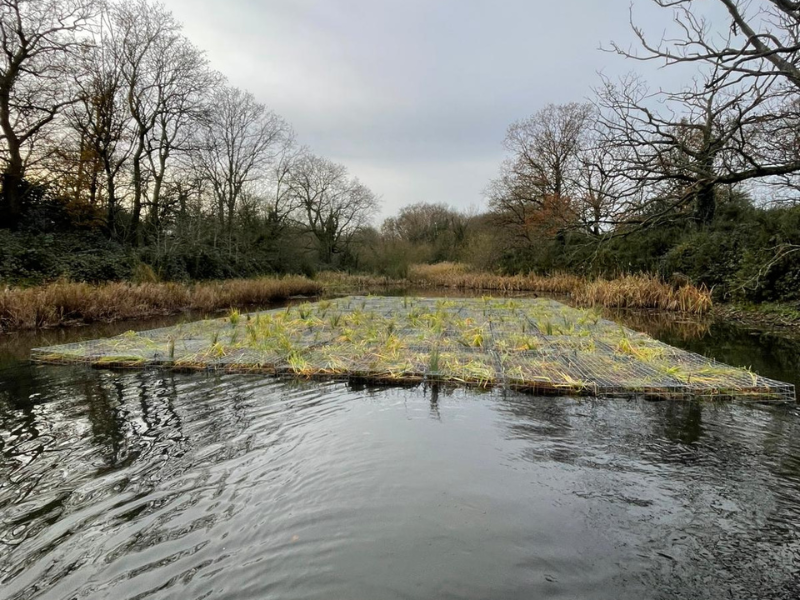
One project which was completed in December 2024, was the installation of 40 new reedbeds at the northern edge of Heronry pond, using the silt from the Lost Spur to create a new habitat. Following positive results for the presences of great crested newts in the Heronry Pond, the development works planned for the Lost Spur project could not go ahead. The focus of that project merged with this one, floating reed beds were installed thanks to funding from Britvic Plc. and Thames 21.
Another project being considered is the Swale of Mutton sustainable drainage feature on the park side of the boundary with Wanstead Golf Club. The swale would allow a more efficient collection of water from the golf club’s land drainage, creating habitat & treating water to improve the quality before entering into the Shoulder of Mutton Pond.
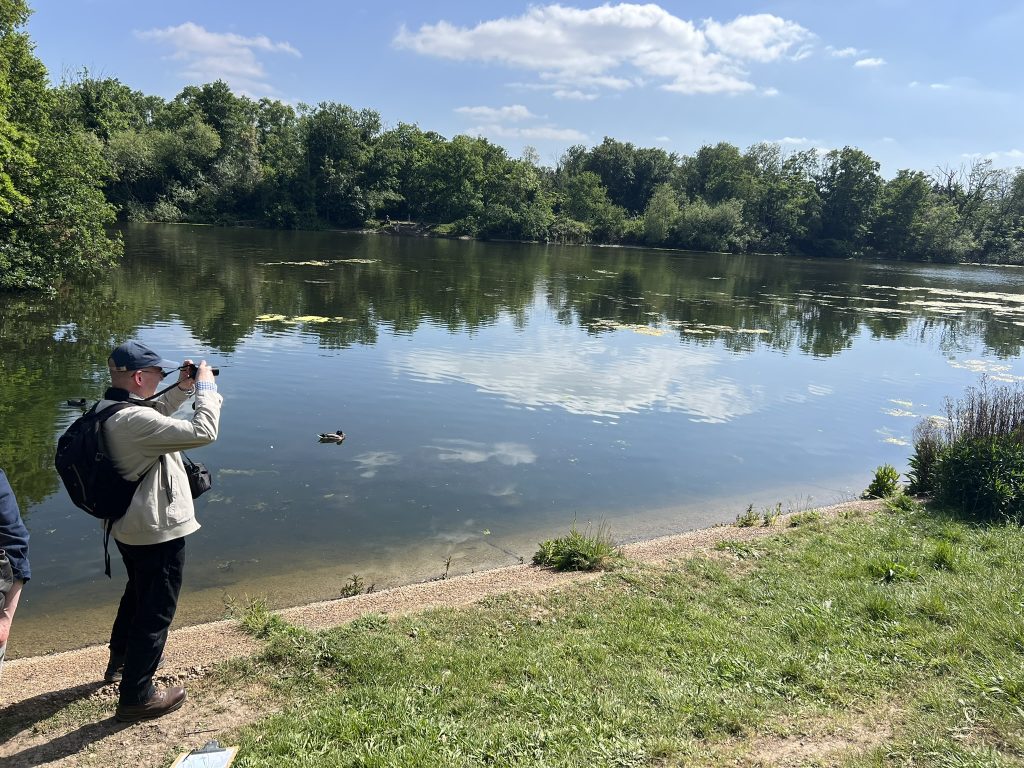
The boundary ditch between Wanstead Golf Course and the Ornamental Water currently discharges water into the River Roding. This could be diverted to allow the water to drain into the Ornamental Waters instead. The proposals are in an early planning phase with City Corporation Officers and the Golf Course to consider ways to progress this.
Another project being considered is to construct a wildlife wetland at the mouth of Reservoir Wood / Shoulder of Mutton pond, with the aim of cleaning the sewer water from the roads before it enters the pond. A great crested newt eDNA survey of the Shoulder of Mutton and Perch Pond will take place in late spring to determine if they are present in these waterbodies, given the extra complexities and costs this would incur if identified.
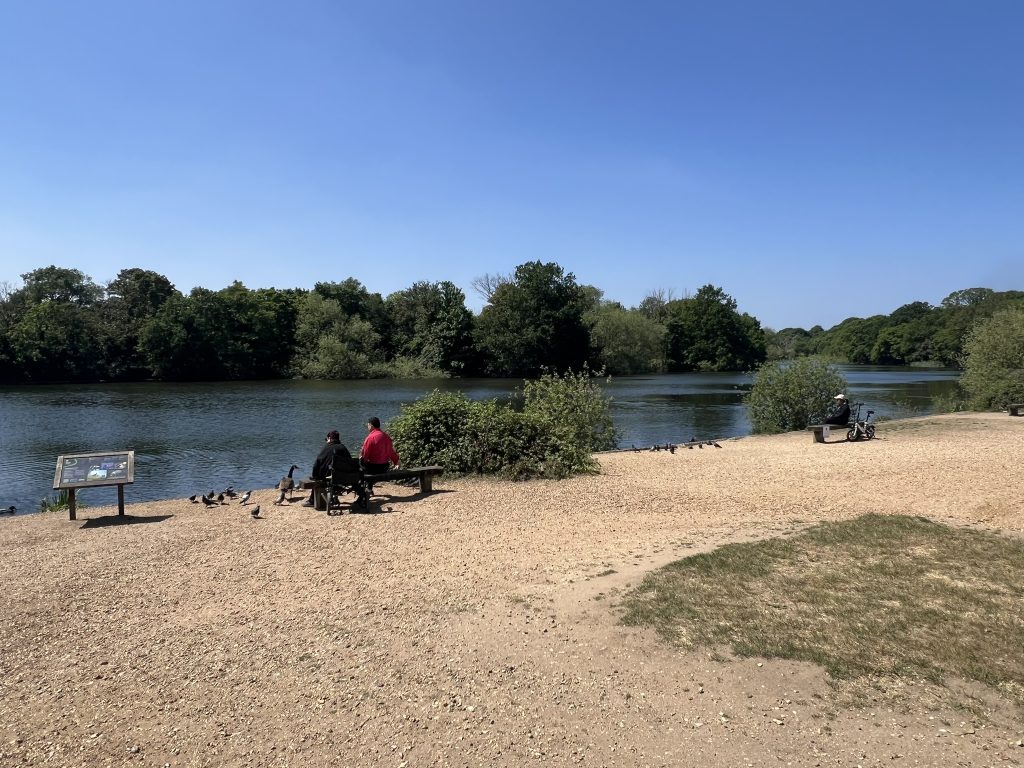
Heronry Pond, Perch Pond, and the Ornamental Water are all classified as Large Raised Reservoirs (LRR). This is because they have the potential to hold 25,000 cubic metres or more of water above ground level. LRR’s are regulated by the Environment Agency under the Flood and Water Management Act 2010. We also classify Shoulder of Mutton Pond as a LRR, as it flows into the Heronry Pond so has the potential to effect the other lakes. The LRR’s need to be inspected regularly to ensure they are in good working order and the banks, which are classed as dams, kept free of vegetation and infrastructure – so no benches can be placed on them and they are mown short during the growing season.
In 2018, the Environment Agency classified the LRR’s within the Park as “High Risk”. The risk is about potential for damage to surrounding properties due to a potential flooding event, this is only a risk if the lakes are filled with water. Once a water source has been secured for the lake system (dependant on Environment Agency approval) a series of dam reinforcement and flood prevention measures will be carried out to the lakes before they are filled with water. For the dam banks to function successfully they need to be kept damp at all times and filled with water.
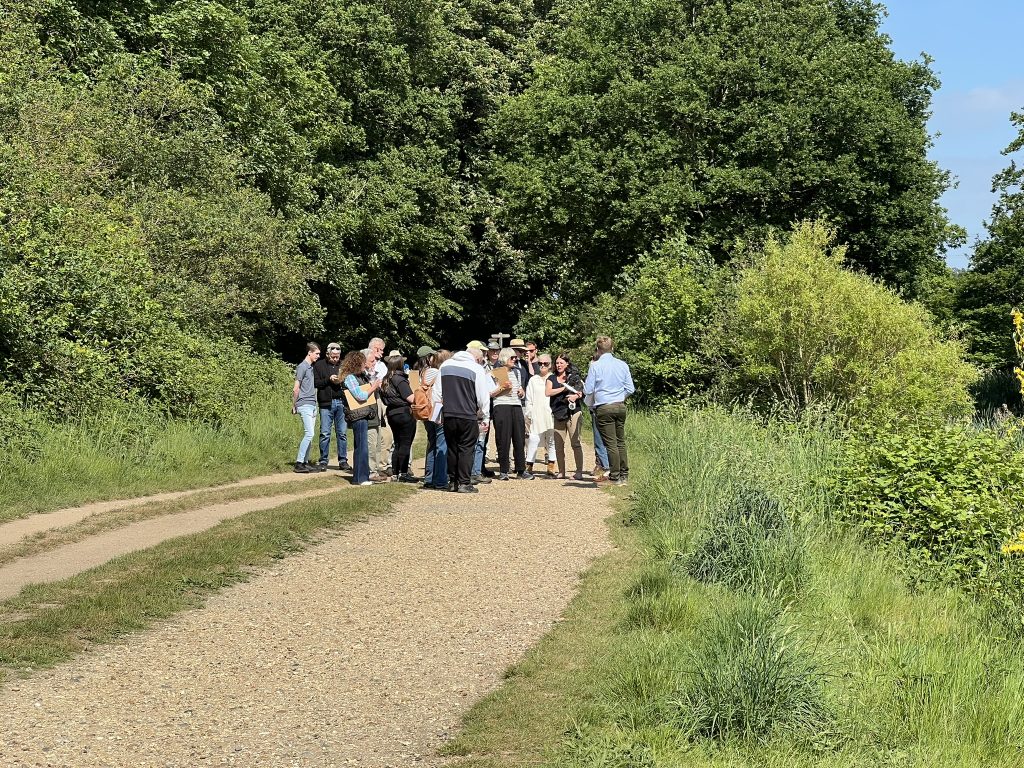
Following up on the water quality monitoring work completed last year, which gathered evidence on whether the Roding was safe to swim in, Thames21 is now working alongside the River Roding Trust and Thames Water to carry out regular targeted monitoring along the River Roding to identify the most polluting outfalls and identify potential solutions to this pollution.
The final delivery stage bid for The Roding Rises project, (a three year Heritage Lottery funded programme working across the river Roding to engage communities with the River and work to improve its condition), was submitting at the end of May 2025. As part of this project, there will be a grant scheme to offer small funding pots (amount TBC but likely up to £10k) to communities and groups to deliver projects to protect, improve and engage people with the Roding and its tributaries. If the bid is approved, the project will start in early 2026.
I have also been working with Redbridge Councillors and Calvin Bailey MP to seek improvements to unlicensed sewage discharge into the River Roding and we have written joint letters called on the Environment Agency to take enforcement action. Calvin has also been asking questions of Ministers in Parliament.
There are also a number of our ‘business as usual’ project in flight at this time of year.
Our Arborist Team have been working on several projects in the Park including:
* Opening up the Sweet Chestnut Tree Avenue by Chalet Wood
* Tree Safety works, including removing sycamore trees suffering from Sooty Bark Disease at both Northumberland Avenue and Warren Road entrances – some of the large trunks felled will be used to edge paths in Chalet Wood later this year once the bluebells have become dormant.
* Supporting the volunteer workdays chipping / removing vegetation they have cleared from the acid grassland
Our Grassland and Works teams have been working on several projects in the Park including:
* Removing vegetation and mowing the dam banks of the Lakes, in accordance with their Large Raised Reservoir status
* Removing Park / Forest boundary fencing at the Northumberland Road entrance creating an opportunity for visitors to walk directly between the two, instead of exiting the Park onto the pavement to go out, round and back in.
* New/replacement bench installed shoulder of Mutton and new bin installed

At the end of the visit, having answered hundreds of questions and sparked lots of new ideas we were all ready for a cup of tea back at The Temple.
We have agreed that this format of being out on site providing project updates to stakeholder was useful and we would aim to replicate this in future, in addition to the project updates which will take place through our comms team throughout the year.
I do hope this gives people a sense of where we are now on the major projects. Of course, that’s a small part of the overall day job, which focuses on all of the usual conservation tasks and cattle grazing, licensing and events, planning responses, seasonal incident management, health and safety, etc. I’m really proud of the work our charity does, supported by some wonderful local organisations and volunteers. Together, I have no doubt that we will see considerable progress on some long outstanding items over the next year.
